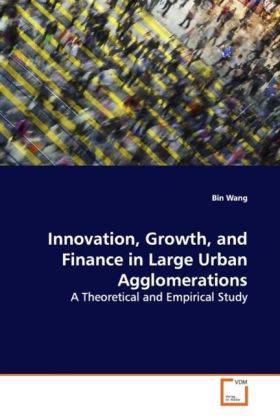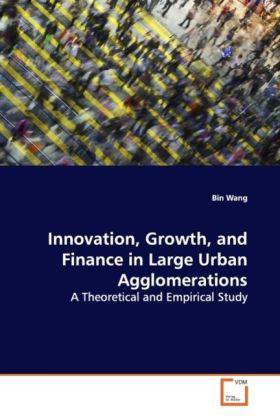
- Afhalen na 1 uur in een winkel met voorraad
- Gratis thuislevering in België vanaf € 30
- Ruim aanbod met 7 miljoen producten
- Afhalen na 1 uur in een winkel met voorraad
- Gratis thuislevering in België vanaf € 30
- Ruim aanbod met 7 miljoen producten
Zoeken
Innovation, Growth, and Finance in Large Urban Agglomerations
A Theoretical and Empirical Study
Bin Wang
Paperback | Engels
€ 48,45
+ 96 punten
Omschrijving
According to statistics of the United Nations, the
world counted 4.07 billion people in 1975 and reached
6.46 billion in 2005. It is expected that in 2030 the
world population will reach 8.19 billion. By
considering these figures the number of cities with
five million inhabitants and more, which was about 40
in 2001, will rise up to 58 in 2015. This fast growth
of world population causes international development
institutions and world politics to face great
challenges. In order to answer how governance and
public policy affect urban and economic growth
economists have developed theories of city systems
since the mid-1970s. How institutions can boost and
restrain both urban and economic development and how
economic development and urbanization intersect with
or define eachother, will be the main issues in this
book. Starting with theories of systems of cities,
this work demonstrates China s distinctive features
as well as the outcomes of its urbanization.
world counted 4.07 billion people in 1975 and reached
6.46 billion in 2005. It is expected that in 2030 the
world population will reach 8.19 billion. By
considering these figures the number of cities with
five million inhabitants and more, which was about 40
in 2001, will rise up to 58 in 2015. This fast growth
of world population causes international development
institutions and world politics to face great
challenges. In order to answer how governance and
public policy affect urban and economic growth
economists have developed theories of city systems
since the mid-1970s. How institutions can boost and
restrain both urban and economic development and how
economic development and urbanization intersect with
or define eachother, will be the main issues in this
book. Starting with theories of systems of cities,
this work demonstrates China s distinctive features
as well as the outcomes of its urbanization.
Specificaties
Betrokkenen
- Auteur(s):
- Uitgeverij:
Inhoud
- Aantal bladzijden:
- 72
- Taal:
- Engels
Eigenschappen
- Productcode (EAN):
- 9783639128246
- Uitvoering:
- Paperback

Alleen bij Standaard Boekhandel
+ 96 punten op je klantenkaart van Standaard Boekhandel
Beoordelingen
We publiceren alleen reviews die voldoen aan de voorwaarden voor reviews. Bekijk onze voorwaarden voor reviews.








